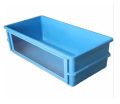
Breaking ice with fiberglass bass boat presents several unique challenges that boat owners need to understand before navigating through icy waters. Fiberglass hulls, while strong and durable, are not designed to handle the impact of ice. When breaking through ice, the boat’s weight can help crack thin layers, but it also poses a risk of hull damage if the ice is too thick. The boat’s sharp edges, such as the transom and bow, may come into direct contact with ice, causing scratches or cracks in the gel coat. Additionally, the propeller is highly susceptible to damage when breaking ice, which can lead to costly repairs. It’s essential to approach the task slowly and cautiously to minimize risks when breaking ice with fiberglass bass boat.
Is It Safe to Breaking Ice with fiberglass Bass Boat
Breaking ice with a fiberglass bass boat can be a challenging and risky task, but with proper techniques and understanding of the boat’s limitations, it is possible to navigate light to moderate icy conditions safely. While fiberglass boats are celebrated for their durability and lightweight structure, they are not primarily designed for the intense demands of ice-breaking. This makes safety precautions essential.
Fiberglass boats feature a smooth, flexible hull that resists wear and tear under normal circumstances. However, when exposed to ice, especially dense or sharp ice formations, the hull’s gel coat can sustain scratches, chips, or even cracks. These issues may not seem significant initially but can lead to costly repairs if not addressed. Beyond structural concerns, ice can also damage critical components such as the propeller and transom. Large ice chunks, if not avoided, can bend propeller blades, reducing their efficiency and increasing strain on the engine.
Another significant safety concern involves passengers. Breaking ice creates unpredictable vibrations and movements that can be unsettling or hazardous. Loose items aboard the boat can shift unexpectedly, posing a safety hazard, while sudden jolts can throw passengers off balance.
While breaking ice is generally not recommended for fiberglass boats, careful planning and adherence to safety measures can make light ice navigation feasible. For boat owners who frequently encounter icy conditions, making enhancements such as installing keel guards or upgrading to high-torque engines can improve safety and performance.
Techniques for Safely Breaking Ice with Your Fiberglass Bass Boat
Breaking ice with a fiberglass bass boat requires a combination of skill, preparation, and specialized techniques to protect the boat while ensuring the safety of its occupants.
- Evaluate Ice Conditions
Assess the thickness and density of the ice before attempting to navigate through it. Thin, fragmented ice is manageable, but solid, dense ice poses a significant risk to the hull and engine. Avoid areas where ice thickness exceeds safe limits for the boat’s design. - Navigate Slowly and Steadily
Slow speeds reduce the impact of collisions with ice, minimizing the chances of hull damage. A steady pace allows for better control and reduces the risk of creating sudden, damaging impacts. - Use the Bow Effectively
Position the boat’s bow against the ice and let its weight gradually push through. This method breaks the ice into smaller, manageable pieces without excessive strain on the hull or engine. - Equip Ice-Breaking Tools
Carry an ice pike or similar tool to manually break up larger chunks of ice. This proactive approach prevents the boat from encountering hard, unbroken ice sheets that could cause damage. - Keep to Safe Paths
Stay in areas where the ice appears less dense or where other boats have already created pathways. Navigating previously cleared routes reduces resistance and strain on the boat.
By combining these techniques with regular maintenance and attention to ice conditions, breaking ice with a fiberglass bass boat becomes safer and more manageable.
Risks of Breaking Thick Ice with a Fiberglass Bass Boat
Attempting to break thick ice with a fiberglass bass boat can result in various forms of damage that compromise the boat’s performance and safety.
One of the most common risks is cracking or chipping of the fiberglass hull. Thick ice exerts significant pressure on the gel coat and underlying fiberglass layers, potentially leading to fractures. These issues may seem minor initially but can worsen over time, allowing water to seep into the structure and weakening the hull’s integrity.
Propeller damage is another frequent issue when navigating dense ice. Ice chunks can bend or chip the blades, reducing propulsion efficiency and increasing wear on the engine. A damaged propeller often requires replacement, which can be both costly and time-consuming.
The transom, which supports the engine, is also at risk during ice-breaking. The strain from ice impact can weaken the transom’s attachment points or cause small fractures. Over time, this can lead to more severe structural issues.
In addition to these physical risks, navigating thick ice can cause engine overheating. Ice debris may clog the cooling system, reducing its effectiveness and potentially damaging internal components.
These risks highlight the importance of avoiding thick ice whenever possible and focusing on lighter, more manageable ice conditions.
Maintenance After Breaking Ice with Fiberglass Bass Boat
Proper maintenance is essential after breaking ice with a fiberglass bass boat to restore its condition and prevent long-term damage.
After returning from icy waters, the first step is to inspect the hull thoroughly. Look for visible damage such as cracks, scratches, or chips. Addressing these issues immediately with a fiberglass repair kit prevents further deterioration.
Cleaning the hull is equally important. Use fresh water and a mild marine cleaner to remove dirt, debris, and any ice fragments that may have adhered to the surface. This not only preserves the gel coat but also enhances the boat’s appearance.
The propeller should be carefully examined for damage. Bent or chipped blades should be repaired or replaced promptly to maintain the boat’s efficiency and performance. Additionally, inspect the engine and cooling system for signs of wear or blockages caused by ice.
Applying a protective wax or sealant after cleaning adds an extra layer of protection against environmental elements. This step helps the fiberglass resist future damage and maintains its smooth, polished finish.
By prioritizing these maintenance steps, boat owners ensure their fiberglass bass boat remains in optimal condition, even after navigating icy waters.
Why Fiberglass Jon Boat to Bass Boat Conversions Are Popular
Enhancements for Breaking Ice with Fiberglass Bass Boat
Making certain enhancements to a fiberglass bass boat can improve its performance and durability when breaking ice.
Reinforced hull guards are a valuable addition for frequent winter boaters. These guards protect vulnerable areas of the hull from scratches and impacts, extending the boat’s lifespan.
Upgrading the engine to one with higher torque allows the boat to navigate icy waters more efficiently. A powerful engine reduces strain and ensures smoother operation, even in challenging conditions.
Installing skeg guards offers additional protection for the propeller and lower unit. These guards prevent ice chunks from causing significant damage, preserving the boat’s propulsion system.
Using anti-ice coatings on the hull reduces ice adhesion, making it easier to clean and maintain the boat after use. These coatings are particularly beneficial for boats used frequently in icy environments.
These enhancements ensure the boat is better equipped to handle the demands of ice-breaking, providing peace of mind for the owner.
When breaking ice with a fiberglass bass boat is done correctly, the benefits include increased safety, minimized damage, and extended boat lifespan.
Proper techniques ensure that the hull and other components remain intact, reducing repair costs and downtime. Slower speeds and controlled navigation enhance safety for passengers, preventing sudden jolts or accidents.
By adhering to best practices and maintaining the boat after use, owners can enjoy the confidence of knowing their vessel is ready for future outings. Breaking ice becomes less of a risk and more of a manageable task with the right approach and preparation.
Protecting Your Fiberglass Bass Boat During Ice Breakage
Breaking ice with a fiberglass bass boat requires careful planning and protective measures to minimize wear and tear. The combination of icy conditions and the inherent characteristics of fiberglass boats can pose risks to the hull, propeller, and engine if not managed properly.
Keel Guards for Hull Protection
One of the most effective ways to protect your fiberglass bass boat during ice breakage is by installing a keel guard. This accessory shields the hull’s underside, particularly the keel, from direct contact with ice. Keel guards are designed to withstand abrasions and impacts, reducing the risk of scratches and cracks on the boat’s gel coat and underlying fiberglass layers.
Skeg Guards for Propeller Safety
A skeg guard is another critical addition when navigating icy waters. The skeg, which protects the propeller and lower unit, is vulnerable to damage from ice collisions. Installing a high-quality skeg guard not only shields the skeg but also ensures that the propeller operates efficiently, even in challenging conditions.
Reducing Speed to Minimize Impact
Speed control is paramount when breaking ice. Operating at a reduced speed minimizes the force of impact between the boat and the ice, decreasing the likelihood of structural damage. Slow navigation also provides better control, allowing the operator to steer away from thicker or more dangerous ice formations.
Using an Ice Pike for Manual Clearing
Carrying an ice pike or similar tool allows boaters to manually break up larger chunks of ice in the boat’s path. This proactive approach reduces the strain on the hull and engine while navigating icy conditions.
Routine Pre-Navigation Checks
Before attempting to break ice, ensure that your fiberglass bass boat is in optimal condition. Inspect the hull for any pre-existing damage and ensure that the engine and propeller are functioning smoothly. A well-maintained boat is better equipped to handle the challenges of icy waters.
By combining these protective strategies, boat owners can reduce the risks associated with breaking ice and ensure a safer and more efficient experience.
Should You Avoid Breaking Thick Ice with Your Fiberglass Bass Boat?
Breaking thick ice with a fiberglass bass boat is not recommended due to the significant risks involved. While fiberglass boats are durable and flexible, they are not built to withstand the extreme forces associated with navigating dense or solid ice.
Potential Hull Damage
Thick ice exerts considerable pressure on the fiberglass hull, leading to cracks, gouges, or even structural fractures. The gel coat, which protects the fiberglass, is especially vulnerable to chipping under these conditions.
Propeller and Engine Strain
The propeller is particularly at risk when navigating through thick ice. Ice chunks can bend or chip the blades, reducing propulsion efficiency and causing vibrations that strain the engine. Additionally, the cooling system may become clogged with ice debris, increasing the risk of overheating.
Safety Hazards for Passengers
Thick ice can cause sudden jolts or impacts, potentially destabilizing passengers and increasing the likelihood of accidents. It is essential to prioritize safety and avoid unnecessary risks when navigating challenging icy conditions.
When to Avoid Ice-Breaking
If the ice appears dense, unbroken, or extends over large areas, it is safer to avoid ice-breaking altogether. Instead, consider alternative routes or delay the journey until conditions improve. Navigating open water or areas with thinner ice is a more prudent choice for preserving the boat’s condition and ensuring safety.
Recognizing the limitations of a fiberglass bass boat is key to making informed decisions about whether to proceed with breaking ice.
Proper maintenance after breaking ice with a fiberglass bass boat is critical for preserving its longevity and ensuring optimal performance. Icy conditions can leave behind scratches, dents, and other damages that require immediate attention to prevent further deterioration.
Inspecting the Hull for Damage
Start by thoroughly examining the hull for signs of wear, including cracks, scratches, or gouges. Even minor damage can escalate if left unattended. Use a fiberglass repair kit to address superficial issues, and consult a professional for more extensive repairs.
Cleaning the Boat Thoroughly
Rinse the boat with fresh water to remove any ice fragments, dirt, or debris that may have adhered during navigation. Using a marine-grade cleaner helps protect the gel coat and maintain the boat’s appearance.
Checking the Propeller and Engine
Inspect the propeller for any chips, bends, or other damage caused by ice impacts. Additionally, check the engine and cooling system for blockages or signs of strain. Addressing these issues promptly ensures that the boat remains efficient and ready for future use.
Applying Protective Coatings
Reapplying a protective wax or sealant to the hull restores its shine and adds an extra layer of protection against environmental elements. This step is particularly important after exposure to harsh conditions.
Conducting Regular Maintenance
Routine maintenance, including lubricating moving parts and tightening loose fittings, keeps the boat in excellent condition. Regular upkeep reduces the likelihood of long-term damage and ensures the boat’s readiness for its next outing.
Taking these maintenance steps after ice-breaking activities helps preserve the fiberglass bass boat’s structural integrity and appearance.
The First Fiberglass Bass Boat and Its Revolutionary Design
Enhancing Performance When Breaking Ice with fiberglass Bass Boat
Improving a fiberglass bass boat’s performance in icy conditions involves making strategic upgrades and adjustments that enhance its durability and functionality.
Reinforcing the Hull
Adding hull reinforcements, such as additional fiberglass layers or protective guards, increases the boat’s resistance to ice impacts. These enhancements are particularly beneficial for frequent winter boaters.
Upgrading the Engine
Switching to a higher-torque engine ensures smoother navigation through icy waters. A more powerful engine reduces strain and provides better control in challenging conditions.
Using Anti-Ice Coatings
Applying anti-ice coatings to the hull minimizes ice adhesion, making it easier to clean the boat after use. These coatings also reduce the risk of scratches and abrasions.
Installing Advanced Navigation Tools
Equipping the boat with GPS systems and sonar helps identify safe pathways through icy conditions. These tools enhance safety and reduce the likelihood of encountering dense or hazardous ice.
Adding Skeg and Keel Guards
Skeg and keel guards protect critical areas of the boat from ice-related damage, extending the lifespan of the hull and propulsion system.
These enhancements not only improve the boat’s performance but also provide peace of mind when navigating icy waters.
Why Proper Ice-Breaking Techniques Matter
Adhering to proper ice-breaking techniques with a fiberglass bass boat offers multiple benefits, from safety to cost savings.
- Reduced Risk of Damage
Correct techniques, such as slow navigation and avoiding sharp turns, minimize the chances of cracks, scratches, and other structural issues. - Improved Safety
Using tools like ice pikes and maintaining controlled speeds ensures a safer experience for passengers and reduces the risk of accidents. - Preservation of Boat Value
Regular maintenance and careful ice-breaking practices preserve the boat’s aesthetic and functional value, ensuring a higher resale price if needed. - Enhanced Confidence
Knowing the proper methods and precautions boosts confidence when navigating icy waters, making the experience less stressful.
By prioritizing these techniques, boat owners can safely navigate light to moderate ice while maintaining the integrity and longevity of their fiberglass bass boats.
Fiberglass Over Pink Insulation Foam: Key Boating Applications
FAQs about Breaking Ice with fiberglass Bass Boat
The lifespan of a fiberglass boat largely depends on several factors, including its maintenance, usage, and storage conditions. On average, a well-maintained fiberglass boat can last anywhere from 20 to 40 years, with some boats lasting even longer if they are properly cared for. Regular cleaning, maintenance, and protection from harsh environmental elements are essential to prolonging the life of a fiberglass boat. The boat’s structure can remain intact for decades, but the interior parts such as upholstery, electronics, and engines may require replacement or upgrading over time. To maximize the lifespan, it is important to inspect the boat regularly for signs of wear and tear, including cracks, gel coat damage, or hull blisters. Proper storage in a dry, cool area, away from direct sunlight and extreme temperatures, will also help to preserve the fiberglass material. Regular maintenance, including washing, waxing, and checking for leaks, is key to maintaining its longevity.
Cleaning a fiberglass bass boat is crucial to keeping it looking great and performing well. Start by rinsing the boat with fresh water to remove dirt, debris, and saltwater (if used in marine environments). Use a mild soap or a specialized boat cleaner to scrub the surface with a soft sponge or cloth. Avoid harsh abrasives that can damage the gel coat. Pay special attention to areas prone to dirt accumulation, such as the deck, hull, and transom. For tougher stains or scuff marks, consider using a fiberglass cleaner or polish designed specifically for boats. To clean the interior, remove any gear and vacuum the cabin. Wipe down the seats and storage areas with a damp cloth to remove grime. After cleaning, apply a protective wax or gel coat polish to the exterior to prevent UV damage and keep the fiberglass surface smooth and shiny. Regular cleaning after every outing will help preserve the boat’s appearance and performance.

As the editor of GangLong Fiberglass, I have years of experience and in-depth research, focusing on cable tray products, fiberglass solutions, and grille systems. I incorporate years of industry insights and practical experience into every content, committed to promoting the progress of the industry. At GangLong Fiberglass, my commitment is reflected in every product, from innovative cable trays to durable fiberglass solutions and sturdy grille systems. As an authoritative voice in the industry, my goal is to provide valuable information to professionals and businesses and promote forward-looking solutions.


